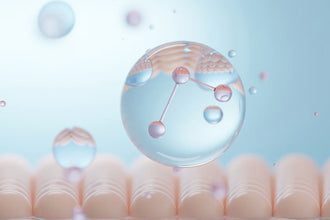
Preventing Contracture Scars in Burn Patients Using Silicone Tape
Contracture Scars in Burn Patients: Understanding the Problem
Many burn patients suffer from a debilitating outcome: contracture scars. Unlike other types of scars, contracture scars tighten the skin too much during healing, pulling surrounding tissues and reducing mobility. Such scars develop when deep dermal or full-thickness burns damage the dermis and underlying structures, and the body repairs the injury with a dense network of collagen.
Burns produce a unique physical and chemical trauma that triggers intense inflammation and prolonged collagen production. The end result is not only thickening of scar tissue but also shortening of surrounding skin, muscles, and tendons, resulting in restricted movement. This is especially problematic for joints, where even small contractures can greatly restrict mobility.
Key characteristics of contracture scars include:
- Tightened Skin: A hallmark feature of discomfort and restricted range of motion.
- Raised Appearance: It is caused by excessive collagen buildup and disorganized tissue layers.
- Deformities: Pulling or puckering of the skin in the region of the scar.
- Functional Limitations: Affected areas such as elbows, knees, or hands are stiff and immobile.
Although these are cosmetic challenges, they are also functional challenges because the patient cannot perform activities of daily living. Early addressing is necessary to prevent long-term functional and aesthetic complications.
Skin Physiology and Burns
Burns are unlike any other wound in the skin’s response to them. Thermal trauma breaks down the protective barrier of the skin, damages collagen structures, and initiates inflammatory cascades that spread beyond the wound margins.
Immediate Damage
Keratinocytes in the epidermis are destroyed by burns, and the burns may extend into the dermis, where blood vessels, nerve endings, and collagen fibers reside. Necrotic tissue and irreversible damage to sweat glands and hair follicles usually occur in full-thickness burns.
Inflammatory Response
Inflammatory mediators flood the burn site, causing the area to swell, turn red, and become painful. In burn wounds, however, the fibroblasts are activated to produce collagen for repair, and this process often becomes excessive and disorganized.
![]()
Prolonged Healing Phases
Burns will not heal as quickly as clean surgical wounds and may take weeks or months to heal completely. During this period, there is an increased risk of hypertrophic and contracture scars as a result of prolonged inflammation and mechanical stress on the tissue.
The physiological changes associated with burns make them highly prone to contracture scar formation in areas where there is tension and frequent movement. Silicone tape is a vital tool in scar prevention, and this is where it comes in.
| Burn Degree | Affected Skin Layers | Characteristics of Damage | Healing Implications |
|---|---|---|---|
| First-Degree | Epidermis only | Redness, minor swelling, no blisters | Heals within 7–10 days, low scarring risk |
| Second-Degree | Epidermis and part of the dermis | Blisters, intense pain, moist wound surface | Healing takes weeks; moderate risk of scarring, depending on depth |
| Third-Degree | Full thickness of skin | Dry, leathery texture, nerve damage | Requires medical intervention; high risk of scarring and contracture |
| Fourth-Degree | Beyond skin into muscles/bones | Charred, blackened tissue |
Often requires grafts/amputation; significant risk of scarring and loss of function |
Silicone Tape Helps Prevent Contracture Scars
For burn patients, silicone tape is a game changer. The properties of the material directly address the physiological challenges of burn wounds and help reduce the likelihood of contracture scars forming. Here’s how:
1. Maintaining Skin Hydration
Dehydration predisposes burn wounds to collagen overproduction. Silicone tape is an occlusive barrier that keeps the moisture in and allows for the best healing environment. The hydration will soften the scar tissue and stop it from hardening or tightening.
- Science Behind It: The silicone barrier reduces transepidermal water loss (TEWL) and prevents the skin from becoming brittle and losing elasticity.
- Result: Scar tissue that has been softened is less likely to contract and restrict movement.
2. Collagen Overproduction Reduction
Overzealous collagen response causes contracture scars. Silicone tape helps to apply gentle, consistent pressure to the scar, which tells fibroblasts to regulate collagen production.
- Why It Works: Compression also aligns collagen fibers in a more organized, parallel structure, which reduces the thickness of the scar and prevents puckering.
- Benefit: It is flat and less likely to intrude on healthy surrounding tissue.
3. Protection from Environmental Stressors
External factors such as UV radiation, dirt, and bacteria are highly sensitive to burn scars. Silicone tape is a form of protective shield to prevent secondary infections or irritation which may make scarring worse.
- UV Protection: Sunlight can darken scars and make them produce more collagen. It prevents hyperpigmentation by blocking out harmful UV rays with silicone tape.
- Barrier Effect: In the mobile areas like the elbows and knees, the tape prevents friction and shear forces.
4. Tissue Remodeling
Silicone tape assists the natural remodeling phase of wound healing in which immature collagen is replaced with more organized and functional tissue. It also helps remodel the shape of the scar and increase the skin’s flexibility by applying consistent pressure.
| Mechanism of Silicone Tape | Benefit for Burn Scars | How It Works |
|---|---|---|
| Moisture Retention | Prevents excessive drying of skin | Maintains hydration, reducing collagen overproduction |
| Pressure Application | Reduces scar elevation and overgrowth | Flattens scar tissue by compressing the area |
| Barrier Protection | Shields from external irritants and infections | Minimizes inflammation and secondary damage |
| Flexibility in Movement | Adapts to skin in high-motion areas | Prevents pulling on healing tissue, reducing contracture risk |
| Temperature Regulation | Stabilizes the microenvironment of the scar | Promotes consistent healing processes in damaged areas |
Wear Time Matters for Silicone Tape: Why?
Silicone tape is only effective in preventing contracture scars if it stays on the skin long enough. The wear times of the tape are extended, ensuring that the tape can continue to exert its therapeutic effect on the scar tissue, which can remodel more effectively.
- 4–6 Hours Daily: Hydrates and gives some initial pressure, but may not flatten raised scars completely.
- 8–12 Hours Daily: Moderate collagen regulation and visible softening of scar tissue is achieved.
- 12+ Hours Daily: It maximizes hydration, compression, and protection, which is why it is the most effective at preventing contractures. According to studies, the best results for burn-related scars are achieved with 24-hour wear with occasional cleaning breaks.
Benefit Specific to High Tension Areas
High tension areas like joints, neck, and hands are where contracture scars tend to develop. In these locations, silicone tape works especially well because it is flexible and can conform to the body’s contours. It keeps pressure on the skin even when the skin is moving, preventing pulling and tightening of healing skin.
- Knees and Elbows: Reduces flexion and extension contraction of skin.
- Neck: Prevents puckering and uneven tension in a highly visible area.
- Hands and Fingers: Prevents stiffness and keeps scar tissue supple so you maintain mobility.
The combination of hydration, compression, and protection of silicone tape makes it a must for burn patients. This ability to prevent disorganized collagen growth, which is the hallmark of contracture scars, allows for functional recovery and improved aesthetics.
![]()
How to Apply Silicone Tape Effectively – Practical Tips
Proper application of silicone tape is essential to maximize the benefits of silicone tape in preventing contracture scars. If the tape is applied incorrectly, it may reduce the efficacy, cause skin irritation, or even worsen the scar. Below are detailed steps and tips to ensure the best results:
1. Prepare the Skin
Make sure the skin is clean and dry before applying silicone tape. Adhesion can be compromised and its therapeutic effects reduced by residual oils, creams, or moisture.
- Wash the area with a gentle cleanser, avoiding harsh soaps or alcohol-based products.
- Dry the area with a clean towel but do not rub, as this may irritate the healing skin.
- Silicone tape should not be used on burn scars that are still tender and healing; wait until the wound has fully closed.
2. Cut to Fit
The scar and a small margin of surrounding skin should be fully covered by silicone tape. By customizing the size, you will have full coverage without waste.
- Cut the tape to size with clean scissors.
- To avoid curling or detachment, try not to leave too much tape past the scarred area.
3. Apply with Minimal Tension
The silicone tape should be applied gently so as not to pull on the scarred tissue and aggravate the healing process.
- Lay the tape over the scar without stretching it, then smooth it out.
- For elbows or knees, or any other curved area, slightly overlap pieces of tape to cover the area completely.
4. Keep Hygiene with Long Wear
Although silicone scar tape is for long-term use, it is very important to keep it clean to avoid skin irritation or infection.
- Clean the scar and surrounding area by removing the tape daily or every 12–24 hours.
- Gently wash the tape with mild soap and water, and let it air dry before reapplying.
Mistakes to Avoid When Using Silicone Tape
While silicone tape is well-intentioned, errors in application or use can cut the effectiveness of it. Avoid these common pitfalls:
1. Starting Too Soon
Silicone tape applied to an open wound or new burn can slow healing and increase the chance of infection. You should always wait until the wound is completely closed and the skin is beginning to regenerate.
2. Overstretching the Tape
Application of tape that is pulled tightly can put undue stress on healing tissue, increasing contracture risk. Apply the tape gently and evenly, always.
3. Neglecting Consistency
If the wear of silicone tape is inconsistent, it is much less effective. For best results, use daily for several months, depending on the scar’s severity.
4. Ignoring Skin Sensitivity
Silicone tape may cause mild irritation or redness for some patients. If this happens, stop use and see a dermatologist for other options.

How Silicone Tape Can Be Combined with Other Therapies
While silicone tape is highly effective on its own, integrating it with complementary therapies can enhance its benefits for burn patients:
1. Physical Therapy
Contracture scars are usually a problem with mobility, especially around joints. Silicone tape can prevent further skin tightening while physical therapy exercises can help maintain range of motion.
- Flexibility exercises like stretching exercises reduce the risk of joint stiffness.
- Routines that strengthen the surrounding muscles help relieve tension on the scarred area.
2. Moisturizing Regimens
Skin that is hydrated heals better. When paired with a dermatologist-recommended moisturizer, the skin stays supple and resilient.
- When you take the tape off and clean the area, apply moisturizer to the scar.
- Reapply silicone tape after the moisturizer has fully absorbed.
3. Massage Therapy
Scar massage can help improve blood flow, remodel collagen, and reduce the thickness of the scar.
- Use light pressure in circular motions around the scarred area.
- Don’t massage directly on tender or recently healed scars to avoid irritation.
Silicone Tape for Burn Scars: Long-Term Benefits
Long-term benefits for burn patients are achieved by consistently using silicone tape for the recommended period (usually 3–6 months). These include:
- Improved Aesthetics: Raised scars are flattened and their texture softened, with a more natural appearance, thanks to silicone tape, which reduces redness.
- Enhanced Mobility: Silicone tape minimizes contracture formation and maintains joint flexibility as well as prevents functional limitations.
- Emotional Well-Being: Improvements in appearance and decreased discomfort can increase burn survivors’ self-confidence and quality of life.
Conclusion
Preventing contracture scars in burn patients needs to be a proactive and informed effort. Silicone tape provides a scientifically proven solution to the very specific problems of burn-related scarring in high tension areas which are at risk of contracture. Collagen production, skin hydration, and protection of healing tissue make it an indispensable part of scar management.
Patients can improve their healing outcomes significantly by knowing what their burn scars need and sticking to the consistent use of silicone tape. When used in conjunction with proper application techniques, complementary therapies, and with professional guidance, silicone tape is a powerful tool in restoring both function and confidence for burn survivors.
References:
https://pmc.ncbi.nlm.nih.gov/articles/PMC7224101/
https://pmc.ncbi.nlm.nih.gov/articles/PMC7950461/
https://pmc.ncbi.nlm.nih.gov/articles/PMC9168018/
https://pmc.ncbi.nlm.nih.gov/articles/PMC3038392/
https://pubmed.ncbi.nlm.nih.gov/26947692/
General Disclaimer: All information here is for educational purposes only and is not meant to cure, heal, diagnose nor treat. This information must not be used as a replacement for medical advice, nor can the writer take any responsibility for anyone using the information instead of consulting a healthcare professional. All serious disease needs a physician.














